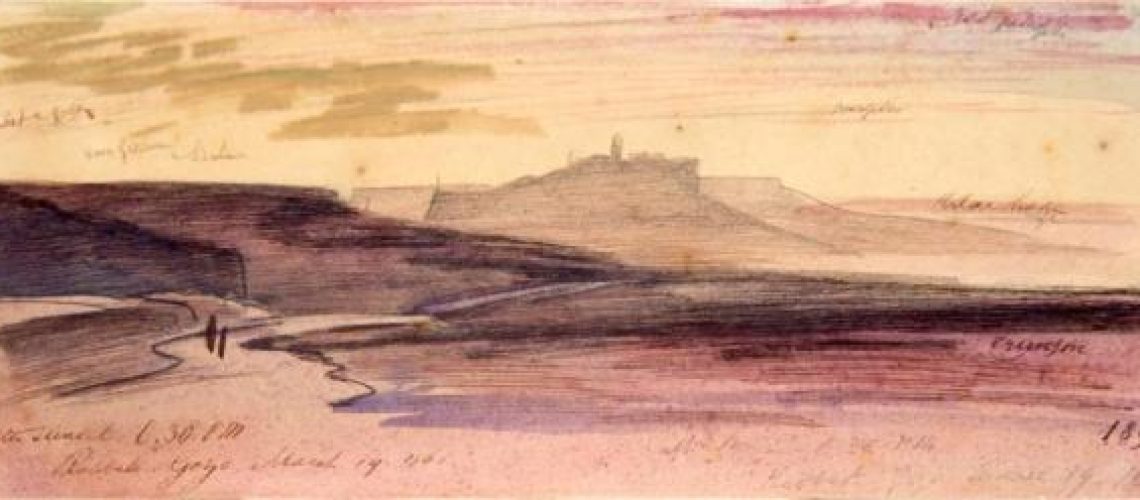A couple of weeks ago we caught up with some good friends over a Cisk in Xerri’s*, watching the evening roll in over the sea to Comino, the twinkling lights of Malta beyond. One of these friends grew up on the island and is an absolute repository of Gozo stories – captured within book covers, he’d be a best-seller covering everything from childhood escapades to historical anecdotes.
You could be forgiven for thinking that with only 9 miles by 4 to its name, Gozo might have been passed over by history. But you’d be wrong. For example, there was a brief French occupation of Malta by Napoleon Bonaparte during the French revolutionary wars. It lasted from 1798 to 1800 and although only short, it was a pivotal moment in the archipelago’s timeline. The French were ousted at the request of the Maltese by Admiral Horatio Nelson, and the Royal Navy and Gozo’s citadel was in the thick of the action…
Just a fortnight ago, Gozo hosted a big re-enactment event to recreate the events at the end of the eighteenth century beginning with the invasion of Gozo by the French who landed east of Ramla Bay and marched through Xaghra to Rabat where the townsfolk were no match for them and where they proceeded to occupy the citadel. Twelve weeks later (2nd September 1798), hearing word that the Maltese were taking up arms against the invaders, the Gozitans too rose up against the French, besieging them in the citadel. During the siege Nelson arrived on the Gozo coast in HMS Vanguard and offered terms of surrender to the French garrison, liberating the island from the French and giving Gozo autonomy.
The striking uniforms and columns of men were an impressive sight, but equally interesting were the scenes behind-the-scenes, tableaux populated by townsfolk and soldiers with guns, drums and flamboyant headwear, relaxing and living in Xaghra’s square or the medieval streets, a real insight into how the islands towns and villages must have looked two hundred and twenty years ago.
For a thoughtful view of the citadel through the ages, there’s a wonderful free exhibition in the Visitors Centre (until 30th June 2018) of paintings and 2D representations, which includes a charming naïve depiction of the French army outside the island’s bastion by an anonymous artist, and a range of art from sixteenth century monochrome mapping to landscapes showing the changing terrain around the citadel over the last hundred years. The exhibition also includes a watercolour by the world-renowned nonsense poet, Edward Lear, Sunset over Rabat, painted in 1866 (the featured image above).
Lear was, apparently, captivated by Gozo’s beauty and created the adjectives ‘pomskizillious and gromphibberous’ specifically to describe the island’s wonders explaining, ‘no words can describe its magnificence’. Whilst staying in Victoria in 1866, he covered the whole island on foot in as little as eight days recording his daily trips in his diaries with delightful details about daily life in Gozo 150 years ago accompanied by tranquil sketches from the arched facade of a familiar building over the globigerina limestone outcrop on Marsalforn’s Qbajar bay to the cliffs at Ta Cenc, down to Fontana’s Fountain, and Xlendi’s bay. And surely then, this is the magical honey-rich place from which the owl and pussy cat went to sea in a pea green dgħajsa a few years later?
*Affectionately known as both Xerri’s and The Bucket, Xerri il bukket is one and the same place. It’s a bar and restaurant with a clifftop location on the edge of Qala, and it surely boasts one of the best views on the island. The food is consistently fantastic – from gargantuan bowls of moreish pasta for €8 (I plumped for chicken and pesto) to steak and plates of deliciously tender ribs big enough to make you wonder whether there’s a little known breed of Gozitan Mammoth which occupied The Significant Other for quite some time.




